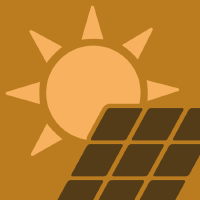Topic Menu
► Topic MenuTopic Editors


Electrification and Sustainable Energy Systems to Improve Agriculture and Rural Areas
Topic Information
Dear Colleagues,
According to the United Nations sustainable objectives, agriculture is the single largest employer in the world, sustaining the livelihoods of 40 percent of the world’s population, many of whom continue to live in poverty. Agriculture uses a large amount of water, which in turn requires a lot of energy to be transformed to the point where it can actually be used. Such energy is usually electric, which implies a great economic cost as well as greenhouse gas emissions, since it is usually of non-renewable origin. Today, rural areas are unpopulated, but this must be changed. In addition, rural areas contain the largest amount of crops on the planet. Sustainable energy systems are the solution to many of the problems regarding the growth of energy demand, and therefore, their sustainable development must begin to proliferate. These systems must be supported by renewable generation sources, distributed storage and new control and management techniques. Sustainable energy systems should be implemented in modern agriculture and rural areas, allowing in the latter a more efficient and sustainable electrification. With this scenario, this Topic is focused on electrification and sustainable energy systems to achieve an improvement in agriculture and rural areas. These developments will allow for a more sustainable and efficient agricultural system and rural areas.
Prof. Dr. Luis Hernández-Callejo
Prof. Dr. Miguel-Ángel Muñoz-García
Topic Editors
Keywords
- sustainable energy systems in agricultural and rural areas
- microgrids in agricultural and rural areas
- electrification in agriculture
- rural electrification
- distributed storage
- wind energy
- photovoltaics
- hydraulic
- agrivoltaics
- solar energy
- solar pumping
- soiling
- remote solar sensors
- remote sensing
- greenhouses
- precision agriculture
Participating Journals
| Journal Name | Impact Factor | CiteScore | Launched Year | First Decision (median) | APC | |
|---|---|---|---|---|---|---|

Agriculture
|
3.6 | 3.6 | 2011 | 17.7 Days | CHF 2600 | Submit |

Electronics
|
2.9 | 4.7 | 2012 | 15.6 Days | CHF 2400 | Submit |

Energies
|
3.2 | 5.5 | 2008 | 16.1 Days | CHF 2600 | Submit |

Sensors
|
3.9 | 6.8 | 2001 | 17 Days | CHF 2600 | Submit |

Solar
|
- | - | 2021 | 16.9 Days | CHF 1000 | Submit |

MDPI Topics is cooperating with Preprints.org and has built a direct connection between MDPI journals and Preprints.org. Authors are encouraged to enjoy the benefits by posting a preprint at Preprints.org prior to publication:
- Immediately share your ideas ahead of publication and establish your research priority;
- Protect your idea from being stolen with this time-stamped preprint article;
- Enhance the exposure and impact of your research;
- Receive feedback from your peers in advance;
- Have it indexed in Web of Science (Preprint Citation Index), Google Scholar, Crossref, SHARE, PrePubMed, Scilit and Europe PMC.

